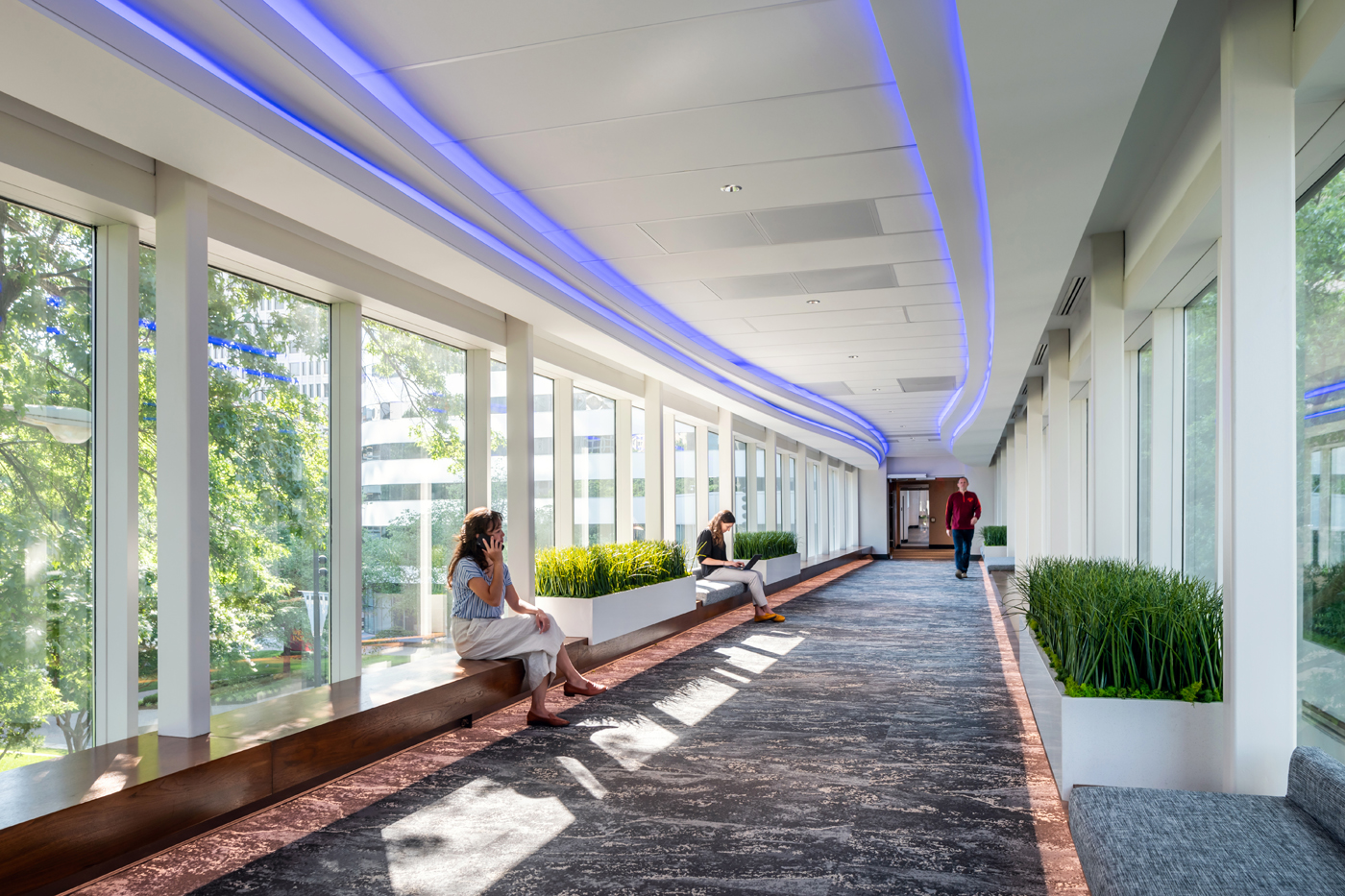It’s no surprise, but two years into a global pandemic, we’re thinking about, well, WELL, more than ever before. We’ve long defined great space as design that puts people first, but with mental, physical, and emotional wellbeing top of mind, evaluating how to best support building occupants is a big priority. We like the WELL Building Standard®, which provides a roadmap for supporting physical and mental health throughout the built environment. And while the WELL framework engages everyone from company ownership to culture committees, the space itself remains a major factor that architects and designers can impact. Considering a WELL certification or looking for wellness ideas and wondering what design decisions make the most impact? WELL, we’re glad you asked.

Location, Location, Location
If you’re at the very start of your journey, you can prioritize wellness beyond your walls. WELL awards points based on your building’s Walk Score®, Bike Score®, and Transit Score®, so sites that are easily accessible by public transit, walking, or biking trails are powerful choices. Physical activity plays a crucial role in overall health, so consider how the surrounding infrastructure can empower and encourage active lifestyles. To support car-free commutes, explore how to make bike storage and showering or changing facilities readily available.

Make Sense of the Senses
It’s WELL-documented (see what we did there?) that some of the least tangible aspects of our environment have the greatest impact on our health and happiness. How do users experience scent, sight, sound, and touch? Does the air filtration system minimize microbes and pollution? Is your lighting balanced, with plenty of natural and circadian controls? Can you provide thermal comfort for all users? Questions like these are why we love our mechanical, electrical, and plumbing engineers—engaging an MEP team early assures the systems and strategies align with your project’s overall wellness goals.

Au Natural
While there’s no replacement for lying under a favorite tree or floating at the beach, replicating elements found in nature in your space can inspire those same feelings of calm throughout the day. Incorporate natural materials like stone and wood, neutral colors like earth tones, and organic patterns reminiscent of shapes and markings found in the landscape. WELL awards points for plant, water, and nature views, so if windows and skylights aren’t an option, explore how biophilic design tenets – including plantings and water features – can be incorporated.
Get a Room
Supporting holistic wellbeing means taking into consideration the emotional and mental needs of your employees. The WELL Building Standard™ recommends (as do we!) planning for a modest multi-function room—or several! —to give users private space to rest, recharge, and utilize for personal use throughout the day. Explore how form meets function and organize your space so that the loudest and brightest areas like cafés and kitchens, team huddles, and collaboration zones are open and accessible, while functions that require more privacy or quiet are situated along an inner core.

where and how they can be productive.
Take it Personally
Every user is different, so a one-size-fits-all approach isn’t ideal. But how can you support diverse preferences within the overall design? Height-adjustable workstations, supplemental personal lighting, and thermal comfort options like blankets and desk fans offer users choice and flexibility in a harmonious way. To balance lively, active zones with quiet, focused ones, look for ways to demarcate these spaces, like modular furniture, green walls, or designated collaboration or social corridors.
For employee recruitment and retention, student success, or guest and client kudos, you’ll want to look for ways to guide and model wellness holistically. A WELL-designed space can be the difference-maker. And no matter where you are in that process, we’re happy to help. Interested in exploring how to make a big impact with some meaningful WELL-thought-out strategies? Let’s talk.


